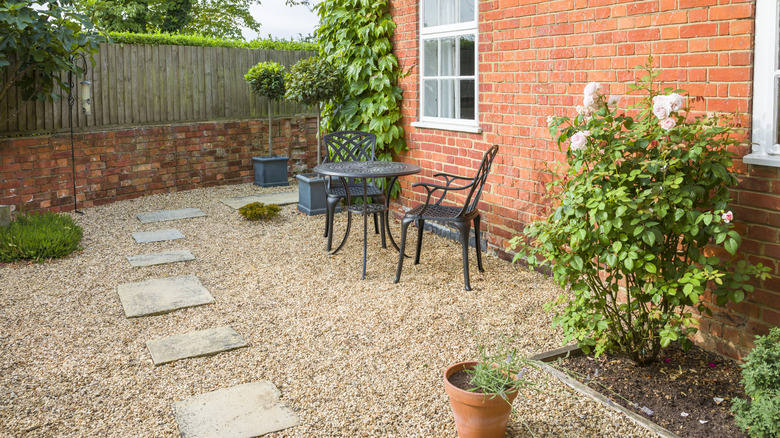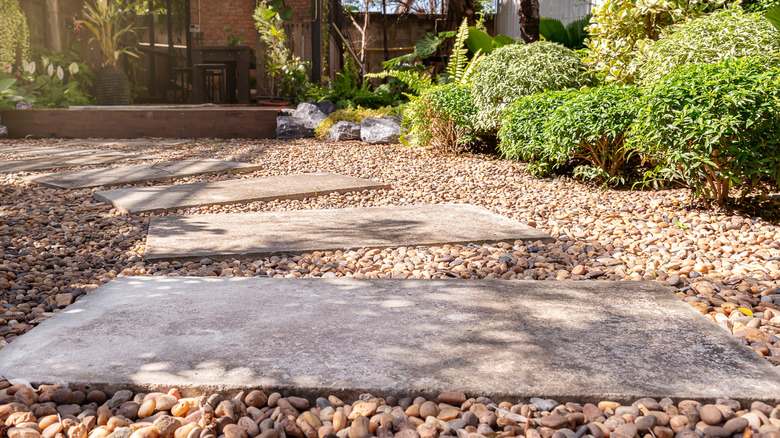Relying On Pea Gravel Around Your Yard Could Backfire
When it comes to landscape design, pea gravel offers an aesthetically pleasing alternative to standard mulch. Its natural color scheme and smooth texture complement many landscape features such as garden beds, driveway edging, and paver walkways. But as nice as it looks, pea gravel is far from maintenance-free. Plants can quickly push through gaps in pea gravel, transforming your nicely manicured landscape into a weed-covered mess. And since pea gravel is small and easily displaced by foot traffic and inclement weather, even a thick layer can be spread thin in parts, making it ineffective at weed control.
Pea gravel has many different uses, and if you want to incorporate it into your yard, not all hope is lost. A few preparatory steps can keep plants from sprouting through the rocks, reducing the amount of time you need to spend pulling weeds. However, to prevent drainage issues, your local weather conditions should also be taken into consideration. Frequent inclement weather, like strong winds and heavy rain, can shift pea gravel around, causing it to pile in spots. In this case, you'll need to rake the pea gravel back to even levels after storms or choose an alternate ground cover. If you still want to use pea gravel in your yard, there's a right way to go about it so that you don't regret it.
The right way to use pea gravel in your landscaping
Pea gravel patios and yard features can be a beautiful, low-maintenance addition to your landscape. However, there are things you should know before installing pea gravel. To prevent weeds from penetrating, a weed-barrier fabric should be put in place under the stone. Weed barrier fabrics come in woven and non-woven varieties. Both options work well for preventing weeds, but non-woven is the better choice for areas where you'll be incorporating plants into your landscape design, as it more easily allows water to pass through versus woven fabrics.
If you're planning on placing pea gravel along your driveway or around pavers in a walkway where it might become displaced from foot or vehicle traffic, edging can be installed. There are many types of edging products available, including large rocks, or plastic, metal, or rubber edging strips. Each type can keep your pea gravel from washing away or shifting out of its intended place. Also, keep in mind that pea gravel can become slippery when wet, so you might not want to use it for a walkway unless you incorporate pavers or stepping stones along the path. While a little extra planning goes into using pea gravel, these steps can prevent weeds from overtaking your yard and keep the gravel where you want it.

